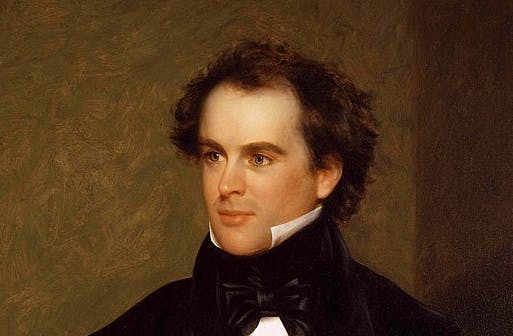Poem of the Day: ‘Oh could I raise the darken’d veil’
Without Nathaniel Hawthorne, how can we understand the return of a bastard puritanism in the Woke movement, or grasp the psychological self-esteem that comes from an ostensible moral self-hatred?

The space that Nathaniel Hawthorne (1804–1864) occupies in American literature has fluctuated. It has never fallen to nothing, but in some decades his reputation was that of only slightly more than a historical artifact, while other decades have taken him as belonging at the center of American art. Adulatory letters from the likes of Herman Melville prove how seriously Hawthorne was taken in his own lifetime, especially after the extraordinary three-year run of novels he produced: “The Scarlet Letter” (1850), “The House of the Seven Gables” (1851), and “The Blithedale Romance” (1852). By the early 20th century, however, he seemed to have faded. Hemingway famously pointed to Twain’s “Huckleberry Finn” (1884) as the foundational American novel, not Hawthorne’s “Scarlet Letter.”
The field of American Studies, emerging as a discipline in American colleges in the 1940s and 1950s, reemphasized the importance of the Puritans for understanding the nation’s intellectual history, and Hawthorne began to be appreciated once again — his short stories perhaps most of all, particularly such writings as “My Kinsman, Major Molineux” (1831), “Young Goodman Brown” (1835), and “Rappaccini’s Daughter” (1844).
That Hawthorne revival, however, died away in the turn to the 21st century, ground up by the twin motors of contemporary literary discourse: a demand that all the past be understood only through the lens of oppression (with American history a tale entirely of race and gender slavery), and an overwhelming presentism that sees the present as so much more enlightened than the past that only present works are worth discussing.
In other words, we need Nathaniel Hawthorne. We need the dial to turn one more time, restoring him to the center of American art. How else are we to understand the return of a bastard puritanism in the Woke movement? How else are we to grasp the psychological self-esteem that comes from an ostensible moral self-hatred?
And a place to start may be where Hawthorne himself started, with a poem he wrote when he was 16, published in his family’s amateur newspaper, The Spectator, in 1820. “Oh could I raise the darken’d veil” is twelve tetrameter lines, opening with an abab quatrain and finishing with four couplets. Its argument — that if offered a chance to see our future, we ought to refuse — is not original, but it is precocious for a 16-year-old boy. And it shows as well some of the themes that Hawthorne would develop in his mature work: the puzzles of time and memory, the melancholy that the intersections of past and future cause.
Oh could I raise the darken’d veil
by Nathaniel Hawthorne
Oh could I raise the darken’d veil,
Which hides my future life from me,
Could unborn ages slowly sail,
Before my view — and could I see
My every action painted there,
To cast one look I would not dare.
There poverty and grief might stand,
And dark Despair’s corroding hand,
Would make me seek the lonely tomb
To slumber in its endless gloom.
Then let me never cast a look,
Within Fate’s fix’d mysterious book.
___________________________________________
With “Poem of the Day,” The New York Sun offers a daily portion of verse selected by Joseph Bottum with the help of the North Carolina poet Sally Thomas, the Sun’s associate poetry editor. Tied to the day, or the season, or just individual taste, the poems will be typically drawn from the lesser-known portion of the history of English verse. In the coming months we will be reaching out to contemporary poets for examples of current, primarily formalist work, to show that poetry can still serve as a delight to the ear, an instruction to the mind, and a tonic for the soul.
